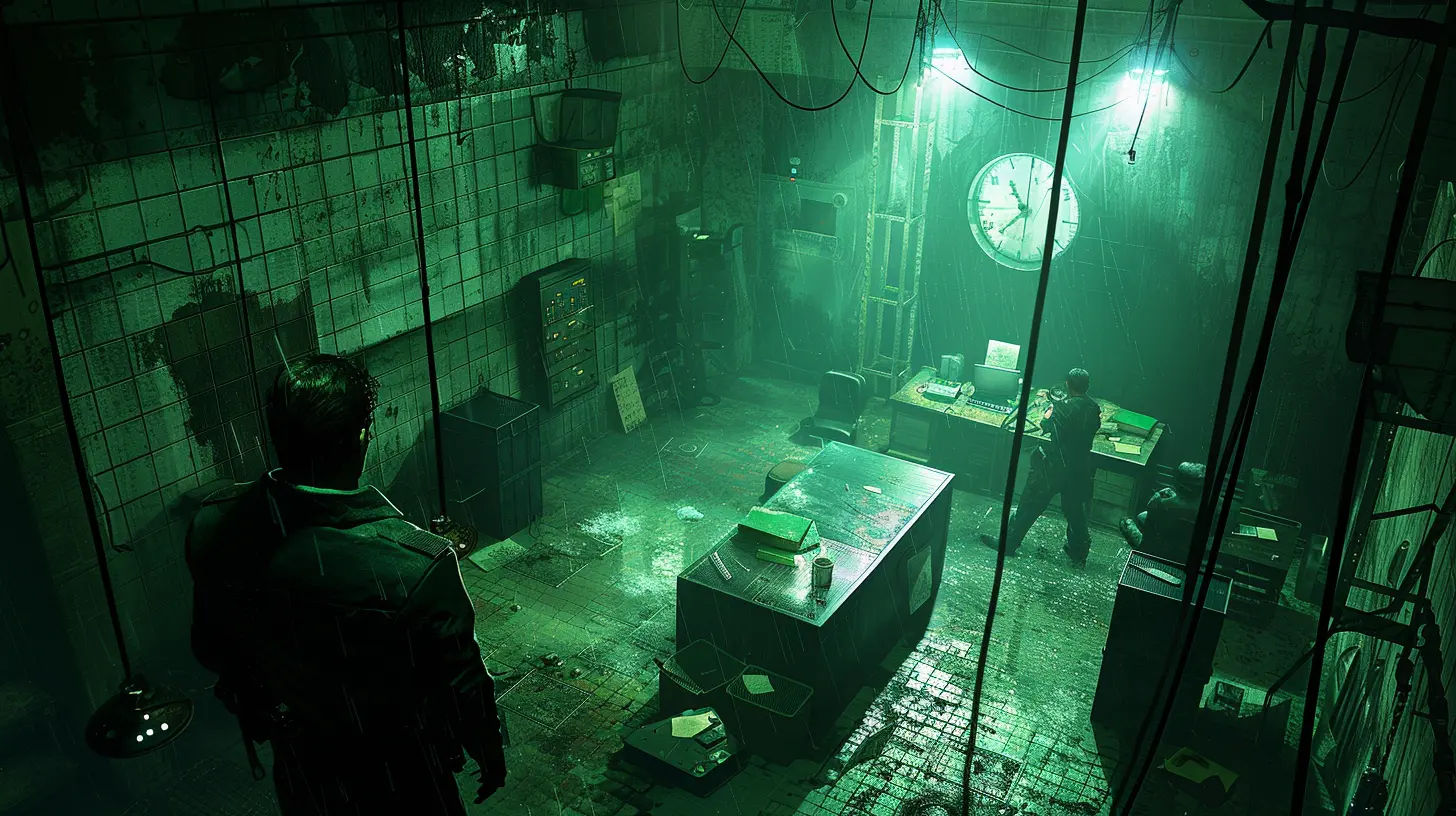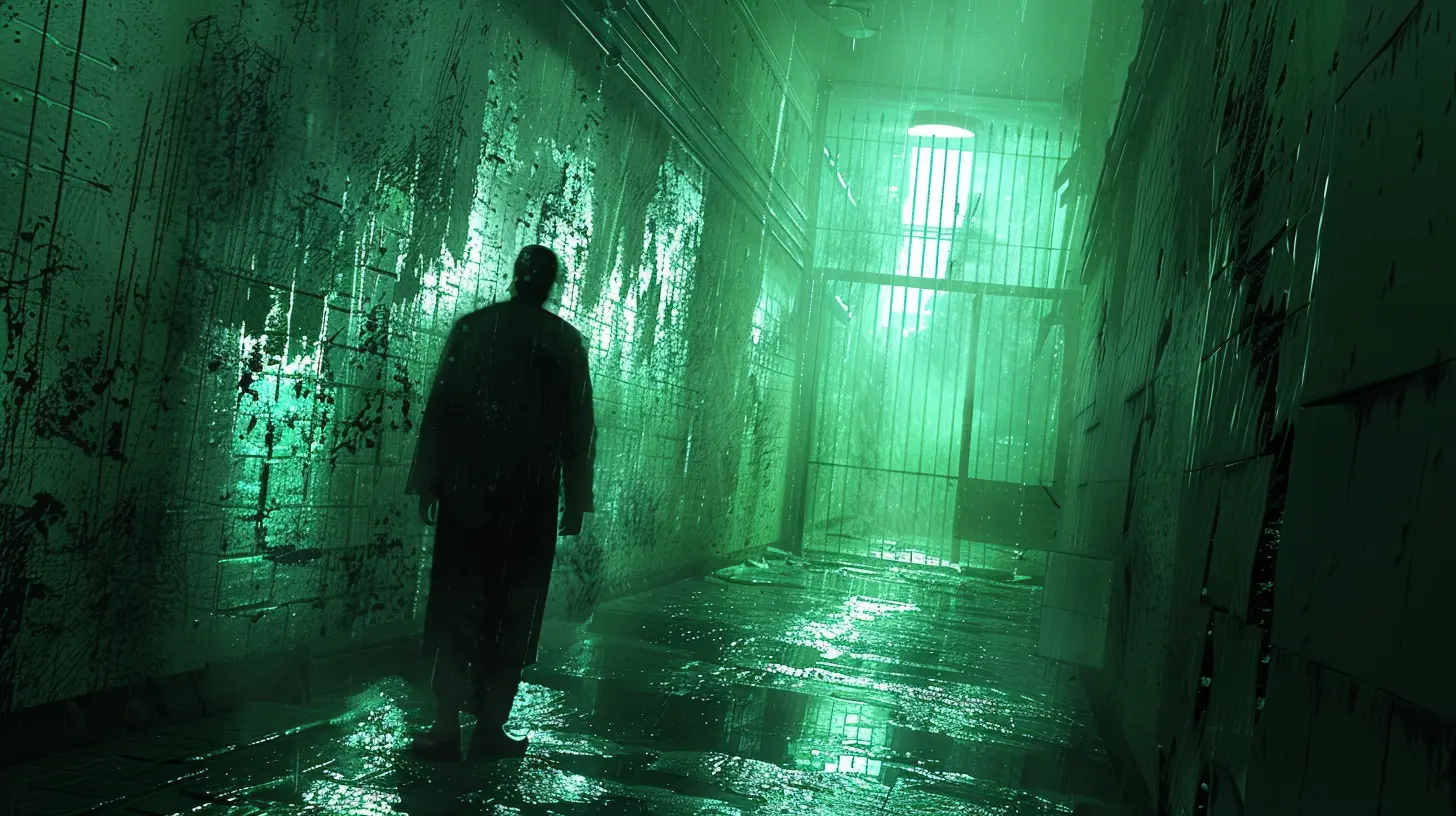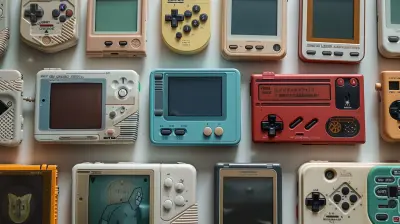Learning from Failure: Trial and Error in Stealth Games
17 November 2025
Let’s face it—failure sucks. Especially when you’ve spent the last ten minutes slowly inching through shadows, memorizing guard patterns, disabling cameras, and then... BAM! A single misstep triggers an alarm, and all hell breaks loose. We've all been there. Whether you're tiptoeing as Agent 47 in Hitman, gliding through the rooftops as Corvo in Dishonored, or cloaked in near-invisibility as Sam Fisher, stealth games have a unique relationship with failure.
But here's the crazy part: failure in stealth games isn't just part of the experience—it is the experience. It teaches you, molds your strategy, and most importantly, it fuels that sweet, sweet satisfaction when everything finally goes according to plan. In this article, we’re diving headfirst into how stealth games use trial and error as a teaching tool, and why your failures are actually your best friend.

Stealth Games 101: The Beauty of Moving Slowly
If you’re new to the genre, stealth games revolve around patience, timing, and observation. Unlike run-and-gun shooters, these games don't reward you for storming in like Rambo. Nope. In stealth, rushing equals disaster. You’re usually outnumbered, outgunned, and have to rely on wits over weapons.Think of stealth games as a strategic puzzle. The world is your chessboard, and every move counts. The beauty lies in the slow, careful unraveling of each layer—identifying threats, crafting a plan, and executing it with surgical precision. And when that plan goes sideways? It’s back to the drawing board.

Trial and Error: The Core of Stealth Gameplay
Let’s talk about trial and error. It sounds boring, right? Like something from a high school science experiment. But in stealth games, it’s pure magic.Each Mistake Is a Lesson
When you get caught, it’s not just game over—it’s feedback. You learn that sneaking past two guards chatting in the hallway isn’t going to work if you don’t time it right. Maybe the lighting betrayed you, or you didn’t notice the camera overhead. That’s the game’s way of saying, “Try something else.”Trial and error in stealth games isn’t punishing. It’s encouraging. The best titles are designed to gently push you toward creative problem-solving without beating you over the head.
Repetition Builds Mastery
Ever wonder why, after failing the same level five times, you suddenly breeze through it on your sixth try? That’s the stealth game loop working perfectly. Repetition turns chaos into clarity. You start noticing enemy patterns, alternate routes, and hidden mechanics you totally missed before.Stealth games are an invisible training ground. The more you play, the smarter and more resourceful you become. That’s because each failure subtly nudges you toward mastery—and the game lets you own that growth.

Famous Stealth Series That Celebrate Failure
Let's look at some heavy hitters in the stealth world that really lean into that "fail to learn" philosophy.1. Metal Gear Solid (MGS)
You knew this one was coming, right? Hideo Kojima’s Metal Gear Solid series practically wrote the book on stealth. MGS doesn’t just allow you to fail—it expects you to. The game gives you tools—cardboard boxes, tranquilizers, sound baits—but using them effectively? That's entirely on you.Every time Snake gets spotted and that heart-stopping alert sound kicks in, you’re thrown into a scramble that feels equal parts frustration and freedom. Run? Hide? Restart? It’s your call—but every choice reveals a new part of the game’s system.
2. Dishonored
Dishonored is a beautiful blend of stealth and supernatural chaos. You can blink from rooftop to rooftop, possess rats, or choke out enemies with surgical finesse. But it’s also incredibly open-ended. Get spotted? You’re not automatically punished. Instead, the game adapts. That flexibility encourages wild experimentation.Yes, you might cause a high-chaos ending by leaving a trail of blood behind—but that’s the point. The game reflects your choices, even if those choices come from failed stealth runs. Every failed attempt teaches you something new about the environment or your powers.
3. Hitman
Agent 47 doesn’t care if you fail, as long as you learn. Hitman (especially the modern trilogy) turns trial and error into its core gameplay mechanic. Each mission is a sandbox, and you’re encouraged to try everything—poison the sushi, plant a bomb in a camera, disguise yourself as a flamingo mascot (yeah, that happens).You’ll get caught. A lot. But instead of locking you out, Hitman celebrates your persistence. It wants you to replay, refine, and eventually craft the perfect, silent hit.

Why Failing in Stealth Feels Different
Failure in other games can be rage-inducing. But in stealth games? It’s oddly satisfying. Here’s why.It's Not Game Over—It's Just a New Plan
Most stealth games don’t instantly throw you back to a checkpoint. Instead, they let things play out. The alarm rings, guards swarm, and you scramble to escape. That dynamic response encourages improvisation. You’re not being punished—you’re being challenged.You’re Always Learning
Even when you fail, you uncover new intel. Maybe you learn there's a hidden vent. Or realize a guard has an annoying habit of turning around at the worst time. That cumulative knowledge builds confidence—and eventually, competence.High Stakes Make Success Sweeter
There’s nothing quite like pulling off a stealth takedown after multiple failed attempts. The tension, the nerves, the satisfaction—it’s like cracking a safe in your mind. The bigger the mess-up, the sweeter the victory when you finally get it right.Embracing the Frustration
Let’s not sugarcoat it—stealth games can be downright maddening. When you’re 20 minutes deep into a perfect infiltration and someone spots you because you stepped on a glass bottle? Oof.But here’s the secret: embracing that frustration is part of the journey. It’s how you grow as a player. The best stealth games are built with that in mind. They want you to feel a little overwhelmed, because overcoming that feeling is what keeps you coming back.
Patience is Not Optional
If you’re someone who likes instant gratification, stealth games will test you. They’re slow burns. They reward the patient and punish the reckless. But that slower pace? That’s where the magic lives. By forcing you to slow down, observe, and think, these games engage your brain in a way few others do.The Reward Loop
Once you buy into the loop—observe, plan, fail, adjust, succeed—you’ll find yourself hooked. It’s that dopamine hit of getting it just right after dozens of failed attempts that’ll keep you chasing the next mission.
How Stealth Games Make You a Better Gamer
Here's a hot take: playing stealth games actually makes you better at other games too. Seriously.- Situational Awareness: You start noticing tiny details—enemy patterns, audio cues, environmental storytelling.
- Resource Management: Most stealth games limit your ammo or gadgets. You're forced to use tools wisely.
- Improvisation: When plans fall apart, you adapt. That skill translates wonderfully into other genres.
So yeah, failing over and over in Splinter Cell might actually sharpen your skills when you jump into Call of Duty or The Last of Us.
Not All Games Get It Right
Let’s keep it real—not every stealth game nails the trial-and-error formula.Some games are too punishing, sending you back 15 minutes because of a single misstep (looking at you older Assassin’s Creed missions). Others have inconsistent AI that either ignores you entirely or spots you from across the map through three walls and a smoke grenade.
Great stealth design threads the needle between challenge and fairness. When it works, it’s magic. When it doesn’t? It feels like fighting the game instead of playing it.
Tips for Embracing Failure in Stealth Games
Alright, let’s wrap this up with some practical advice. If you’re new to stealth games—or still rage-quitting too often—here’s how to make peace with failure:1. Quick Save is Your Best Friend
Use it. Abuse it. Live by it. Smart saving before risky moves can save you massive time and frustration.2. Don’t Be Afraid to Experiment
Try the weird method. Go the long way. Test the edge of the map. The best discoveries come from messing around.3. Watch and Wait
Spend a minute just watching guard patterns. Don’t do anything. Just observe. You’d be amazed what that teaches you.4. Accept That You Will Fail
This is the biggest tip—shift your mindset. Failures aren’t setbacks; they’re progress markers. Every “Game Over” nudges you closer to mastery.Final Thoughts
Stealth games teach us something deeper than just how to sneak past a guard or silently eliminate a target. They teach us that failure isn’t the end—it’s information. It’s the guidepost pointing you to a better approach. In a gaming world obsessed with winning, stealth games quietly whisper, “It’s okay to lose—just learn from it.”So next time you get caught crouching in the shadows, don’t throw your controller. Take a breath, reload that quick save, and thank the game for making you a little better than you were five minutes ago.
Success in stealth is earned, not given. And you earn it one mistake at a time.
all images in this post were generated using AI tools
Category:
Stealth GamesAuthor:

Madeleine McCaffrey
Discussion
rate this article
1 comments
Sheena Green
Embracing failure in stealth games enhances strategy, encouraging players to adapt and refine their skills effectively.
November 17, 2025 at 3:55 AM


